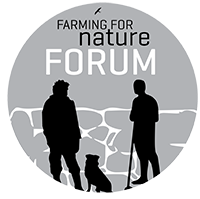Min Till & Low Disturbance Crop Establishment
‘Min till – Top Ten Tips & How it works in the Irish context’
by Thomas Fouhy
Min till – what does it mean? My understanding of min till….It is the non -inversion of the topsoil to create a seed bed by shallow cultivation techniques in order to preserve and slowly grow existing carbon reserves and plant nutrients and most of all soil microbiology.
Top Ten Tips
- Start in a small area first in order to upskill yourself on a new cultivation method.
- No new machinery purchases are needed at the start, you can use existing ploughing equipment.
- Reduce your ploughing depth to a max of 10-12 cm (i.e. 4-5 inches). This reduces carbon and humus depletion by 50%.
- Only carry out cultivations when soil conditions are suitable to do so.
- Leave adequate time between cultivations for weed seeds to germinate before carrying out further cultivations or planting/drilling.
- Practice the false or stale seed bed method.
- Try and avoid compaction at all costs. Cover crops and cash crops with tap roots also help with compaction.
- Optimum integration of green manures and living mulches is needed to guarantee crop N needs when carrying out min till systems.
- Crop rotation plays a major part in the successful use of min till, the more diverse the rotation and cover crops used the bigger impact on soil quality and cash crop yield.
- There is no shortcut for building soil carbon, min till will only be successful when carried out in conjunction with the use or cover crops and under sowing living mulches .
About Thomas Fouhy
More information on Thomas’s farm here. Ambassador since 2020
Low Disturbance Crop Establishment
by Andrew Bergin
The naming of this system is a bit tricky. There are various phrases are associated with particular approaches:
- Strip Till – the use of a deep tine followed by a seed coulter, disturbing about a third of the ground.
- Min Till – cultivations to create a seedbed ahead of the drill. Not complete inversion like a plough but can involve a lot of soil disturbance.
- No Till – no soil disturbance ahead of the drill, which should also move very little soil.
I suggest “Low Disturbance Crop Establishment” to describe an approach that can embrace every style.
- Low Disturbance Crop Establishment involves the least possible soil disturbance to sow a crop. It may include separate light cultivation but more often the only movement of soil is by the tine or disc that inserts the seed in the ground. The rule of thumb is “As little soil disturbance as possible and as much as necessary.”.
- The idea is to minimise disruption to soil biology and to prevent mineralisation of nutrients when excess oxygen enters the soil. Some cultivation may be necessary as the system is being introduced and this should be judged field by field.
- It involves less machinery, fuel and manpower than conventional methods but requires patience and flexibility from the farmer.
- It is best introduced gradually, allowing the farmer to develop skills without taking too much risk. A good place to start is after a break crop like beans or rape, as the roots of these will already have improved soil structure.
- It is unlikely to succeed without other regenerative practises such as cover crops, diverse rotations and a close look at all synthetic inputs.
- As the structure of the soil improves in this system it will actively manage moisture for you. Reduced compaction will allow excess water to escape through the soil rather than sitting on top or running off along with your topsoil and nutrients. Improved organic matter will retain vital moisture in dry times.
- Instead of burying weed seeds to plough back up in the future, this system leaves them on the surface. Birds, worms, insects and weather will take care of a lot of them and weed pressure should reduce over a few years. But some weeds, such as willow herb, prefer the low disturbance and should be managed by rotations, cultivations and careful choice of herbicides.
About Andrew Bergin
More information and a short film on Andrew’s farm here. Ambassador since 2020

